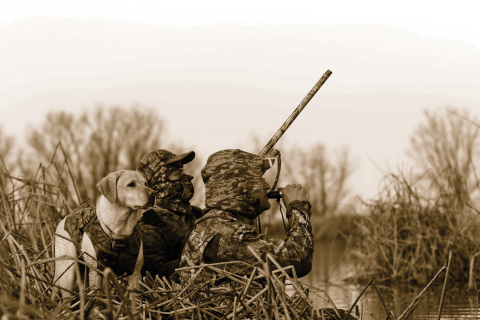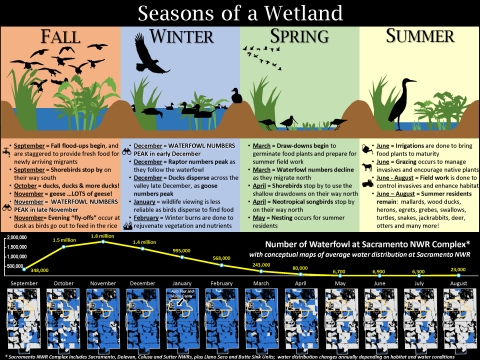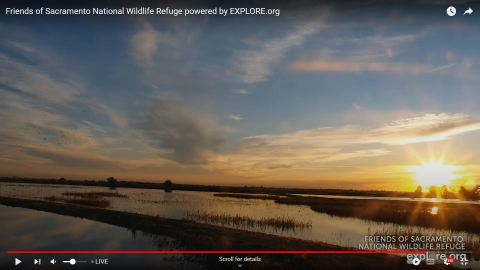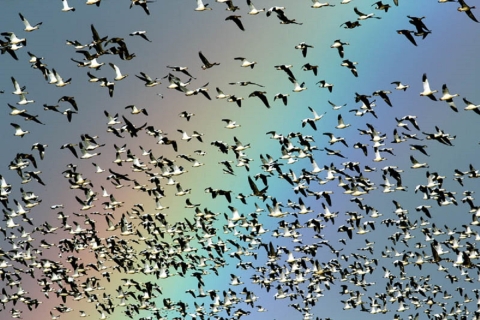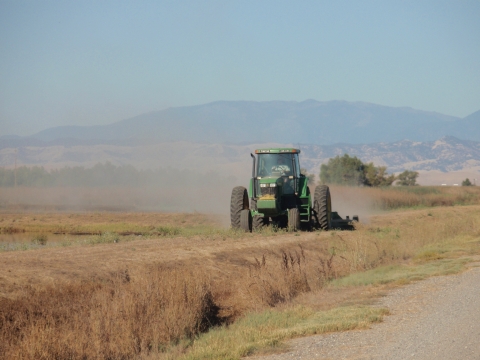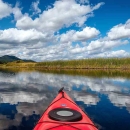Information is updated here promptly as conditions change* (Updated December 30, 2025 2:50pm)
CLOSED DUE TO FLOODING:
- Colusa NWR Hunt Area - Parking Lot C only (West Side)
- Sutter NWR Hunt Area
Areas closed until further notice. Other areas are subject to closure without notice. Please use extreme caution when visiting refuges during or after bad weather, as flooding can occur without warning and road shoulders are soft and will not support your vehicle.
Information is updated here promptly as conditions change*
CLOSED (due to flooding)**:
- Colusa NWR Hunt Area - Parking Lot C only (West Side)
- Sutter NWR Hunt Area
OPEN:
- Sacramento NWR Visitor Center and Nature Store = Limited days and hours
- Sacramento NWR Restrooms
- Sacramento NWR Auto Tour/Trails
- Sacramento NWR Hunt Area
- Delevan NWR Hunt Area
- Colusa NWR Auto Tour
- Colusa NWR Trail and Observation Platform
- Colusa NWR Hunt Area - West Side (except Parking Lot C - see above)
- Colusa NWR Hunt Area - East Side
- Llano Seco Unit of Steve Thompson NCV WMA – Trail and Observation Platform
- Sacramento River NWR remains open to authorized public use
*Before calling the refuge for updates, please review this section of our website or our social media pages. When known, new information will be posted here and to our Facebook and Instagram promptly.
**Areas are subject to closure without notice. Please use extreme caution when driving the refuges during or after bad weather, as flooding can occur without warning and road shoulders are soft and will not support your vehicle.
Bald Eagle Nest - Sacramento NWR
A young bald eagle pair is nest-building at Sacramento NWR. To help them thrive, please stay in your vehicle and on designated roads. There’s a great alternative viewing area at the bench at Trail Marker 2 on the Wetland Walk Trail. Our Visitor Services team is available on Fridays and Saturdays (subject to change) if you need assistance during your visit. We will continue to monitor the situation and provide updates as needed. Thank you for enjoying wildlife responsibly.
Visit Us
Welcome to Sacramento National Wildlife Refuge!
Sacramento NWR is the Headquarters for the Sacramento NWR Complex, and offers a visitor center with restrooms and a picnic area, auto tour, information kiosks, observation decks, trails, photography blinds (by reservation only), environmental education programs, seasonal bicycling opportunities, and hunting.
Sacramento National Wildlife Refuge is one of the 5 National Wildlife Refuges (NWR) and 3 Wildlife Management Areas (WMA) that make up the Sacramento National Wildlife Refuge Complex:
- Sacramento NWR
- Delevan NWR
- Colusa NWR
- Sutter NWR
- Sacramento River NWR
- Llano Seco Unit (Steve Thompson North Central Valley) WMA
- Butte Sink WMA
- Willow Creek-Lurline WMA
Use the table (below), the left menu (computer), or the top right hamburger menu (three lines on mobile device) to navigate to the information that's most helpful for you:
| Find Your Way Around | Activities | Hunting |
|---|---|---|
| Visit Us A one-stop place for all your visiting questions, including hours, accessibility, what to expect, passes and permits and more! | Auto Tours Trails Bicycling | Hunting at Sacramento, Delevan, Colusa and Sutter NWRs |
| Maps Directions Brochures | Photography | Hunting (RIVER) at Sacramento River NWR |
| Visitor Center | Education and Outreach | Junior Hunters Mobility-Impaired Hunters Special Hunts |
Location and Contact Information
About Us
The Sacramento National Wildlife Refuge, split across Glenn and Colusa Counties, is located about 70 miles north of the metropolitan area of Sacramento and 7 miles south of the town of Willows. The refuge consists of 10,819 acres of wetlands, grasslands and riparian riparian
Definition of riparian habitat or riparian areas.
Learn more about riparian habitats.
What We Do
Resource Management
To help plants and wildlife, Refuge staff uses a variety of habitat management techniques to maintain, recover or enhance plant and wildlife values. Refuge staff carefully consider any management techniques and employ them in varying degrees according to the situation.
Conservation and Partnerships
The Complex is involved in many conservation endeavors, including Comprehensive Conservation Plans, Private Landowner Programs, and the National Wildlife Refuge System Improvement Act.
Our Organization
National Wildlife Refuge System (NWRS) Improvement Act of 1997:The NWRS Improvement Act defines a unifying mission for all refuges, including a process for determining compatible uses on refuges, and requiring that each refuge be managed according to a CCP. The NWRS Improvement Act expressly states that wildlife conservation is the priority of System lands and that the Secretary shall ensure that the biological integrity, diversity, and environmental health of refuge lands are maintained. Each refuge must be managed to fulfill the specific purposes for which the refuge was established and the System mission. The first priority of each refuge is to conserve, manage, and if needed, restore fish and wildlife populations and habitats according to its purpose.
Our Species
Sacramento National Wildlife Refuge is best known for migratory waterfowl. Migrating waterfowl are present September through April and numbers regularly peak at over 500,000 ducks and 250,000 geese. Sacramento NWR is an important wintering grounds for Tule Greater White-fronted Geese. The Sacramento NWR Complex provides nearly 70,000 acres of wetland, grassland, and riparian riparian
Definition of riparian habitat or riparian areas.
Learn more about riparian habitats for a wide array of waterfowl, shorebirds, raptors, waterbirds, songbirds, reptiles, and mammals. The Complex currently supports nearly 300 species of birds.

